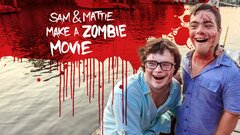As the reigning kings of gross-out comedy, the Farrelly Brothers spent their careers writing and directing outlandish comedies that often pushed the boundaries of taste, while producing big laughs and huge box office. After receiving their start writing for the small screen, the Farrellys emerged with their first comedy feature, "Dumb and Dumber" (1994), which became one of their biggest box office hits.
Following the hilarious "Kingpin" (1996), they crossed the romantic comedy with their trademark gross-out humor for "There's Something About Mary" (1998), a non-stop laugh-fest that was also a huge hit both home and abroad. After "Stuck on You" (2003), the Farrelly Brothers delivered an unusually heartwarming romantic comedy with "Fever Pitch" (2005), which proved that the two could provide depth as well as humor.
Born on June 17, 1958 in Cumberland, RI, Farrelly was raised by his father, Robert Sr., a doctor, and his mother, Mariann, a nurse practitioner. Having grown up in a comfortable home, Farrelly had very little ambition outside of being an underachieving slacker. After graduating from the Ken School in Connecticut, he studied business at Providence College, where he faired rather poorly as a student while excelling at partying.
Despite his shiftless lifestyle, Farrelly did harbor a desire to become a writer. In 1979, he took a salesman job at U.S. Lines, Inc. in Boston, MA, but spent most of his time on the road dreaming up stories he wanted to write. Following a brief stint in Las Vegas, NV, where he continued to strive toward nothing in particular, Farrelly returned to the East Coast where he became a waiter in order to find more time for his ambitions.
Farrelly managed to finish his first novel, Outside Providence (1988), a semiautobiographical tale about a slack named Timothy "Dildo" Dunphy, who is sent to a posh private prep school by his widower father.
Writing the novel led to a renewed sense of purpose. Farrelly decided to continue his education by studying writing at the University of Massachusetts, Amherst, only to find the program dissatisfying. He transferred to Columbia University in New York, which he found more to his liking. Farrelly graduated from Columbia with a master's in fine arts and moved to Los Angeles soon after, where he began writing screenplays.
Not long after his arrival in the City of Angels, Farrelly landed a development dealt with writing partner, Bennett Yellin, and later was joined by brother Bobby. The two - who collectively became known as the Farrelly Brothers - started their careers writing for television, earning their first credit on the David and Jerry Zucker-produced comedy special, "Our Planet Tonight" (NBC, 1987), which poked fun at TV magazine shows with roving reporter segments and pompous in-studio commentators.
Their first big break came when they scripted two 1992 episodes of "Seinfeld" (NBC, 1989-1998), including "The Virgin," in which Jerry (Jerry Seinfeld) dates a woman who has not lost her virginity (Jane Leeves), while also struggling with George (Jason Alexander) to write their pilot idea for NBC.
Having seen so many of their film projects go down the developmental drain, Farrelly opted to direct his first feature, "Dumb and Dumber" (1994), which he wrote with Yellin and Bobby, who also served as a co-producer - a daunting feat due to the fact the fact that neither brother had ever picked up a camera before. Farrelly - who credited Mel Brooks' "Blazing Saddles" (1974), John Landis' "Animal House" (1978) and the breakthrough Abraham-Zucker-Zucker collaboration "Airplane!" (1980) as inspirations - had grown tired of smart aleck comic heroes who were smarter than everyone else.
The brothers instead presented two doofus buddies (Jim Carrey and Jeff Daniels) on a cross-country quest to deliver a briefcase of money to a beautiful woman (Lauren Holly), only to learn the hard way that it was ransom for her kidnapped husband. Riding the coattails of Carrey's star power, the Farrelly Brothers hit a homerun their first time at bat, generating over $125 million in domestic box office receipts, despite critics giving the gross-out comedy mixed reviews.
Regardless, the Farrellys established themselves right from the start as a comedic force to be reckoned with.
The Farrelly Brothers faired less well with their follow-up, "Kingpin" (1996), which they co-directed but did not write. The film barely managed to recoup its $25 million budget. The fault may well have been with MGM's lackluster marketing, as Peter claimed, since many critics who had not exactly warmed to "Dumb and Dumber" came onboard, howling at the Farrellys' audacious vulgarity. Establishing their working method of Farrelly directing the actors from behind the camera while Bobby positioned himself at the monitor, the brothers elicited first-rate performances from Woody Harrelson as a former bowling champion who bottoms out after losing his hand, Randy Quaid as an Amish prodigy he discovers and manages, and Bill Murray as a smug pro bowling champion who sports an hilarious comb-over from hell.
The Farrellys generated numerous belly laughs with jokes about prosthetic limbs, bad-teeth, unsightly women, and even spilling hot coffee on a baby, while also including sight gags involving vomit. Tasteless as some of the jokes may have been, "Kingpin" marked a step up for the Farrellys in terms of comedy despite the lackluster reception at the box office.
Taking gross-out jokes to a whole new level in "There's Something About Mary" (1998), the Farrelly Brothers made what became their most successful comedy to date, delivering some truly outrageous gags that managed not to cross the line too far. From the moment in the opening flashback sequence where nebbish high schooler Ted Stroehmann (Ben Stiller), nervous about his prom date with his dream girl (Cameron Diaz), gets his private parts caught in a zipper, the Farrellys had audiences eating from the palm of their hands.
Having relentlessly milked that gag for every drop of humor imaginable, they proceeded to push the boundaries in numerous sequences involving the handicapped, while lampooning gay sex and serial murder - not to mention Matt Dillon's ludicrous overbite and two memorable scenes with a dog, where Dillon's smarmy character resuscitates it with a pair of wires. Perhaps best of all was the seminal film moment when Stiller answers the door with an egregious gob of ejaculate hanging from his ear and Diaz mistakes it for styling mousse, putting it on her tresses and setting up the tremendous, sticky-haired follow-up.
Because the Farrellys managed to appeal both to 16-year-old males and women of all ages, "There's Something About Mary" was a hit with critics while taking in almost $370 million worldwide.
For "Outside Providence" (1999), which they adapted from their 1988 novel, the Farrelly Brothers stayed behind the scenes as producers, turning the reins over to fellow Rhode Islander Michael Corrente. Starring Shawn Hatosy, Amy Smart and Alec Baldwin, the coming-of-age story set during the 1970s sorely lacked the Farrellys' trademark zaniness, leading to a poor showing at the box office.
The Farrellys stepped back behind the cameras for "Me, Myself and Irene" (2000), reuniting with the zany Jim Carrey, who played a good-natured Rhode Island state trooper with split personality disorder - he suddenly turns into a violent sex fiend at a moment's notice - who finds himself competing for the love of a woman (Renee Zellweger). While definitely maintaining their claim as the masters of the low brow, The Farrellys reunion with Carrey was merely amusing and lacked the magic of their initial collaboration.
Meanwhile, they directed the animated sequences in "Osmosis Jones" (2001), which followed the adventures of anthropomorphic germs and microbes inside the body of an ailing Bill Murray. Neither the appeal of Murray and the Farrellys nor the combination of live action and animation generated much interest.
The Farrelly Brothers followed with "Shallow Hal" (2001), which cast Jack Black as a middle-aged cad who can suddenly only see the beautiful person inside of his obese girlfriend (Gwyneth Paltrow). Neither particularly funny nor especially offensive, the wan comedy failed to click on any level.
Faring slightly better was "Stuck On You" (2003), with Matt Damon and Greg Kinnear cleverly cast as a set of conjoined twins. But that film's underperformance at the box office suggested that the novelty of the Farrelly brand of comedy may have finally grown stale. That notion failed to last long, as the siblings rebounded strongly when they set aside a lot of the slapstick and gross-out jokes and directed the warm romantic comedy "Fever Pitch" (2005).
Based on the Nick Hornby novel of the same name, the picture cast Drew Barrymore as a corporate climber whose idyllic romance with a sweet-natured school teacher (Jimmy Fallon) is threatened by his obsessive devotion to the Boston Red Sox. The film proved to be an appealing date film, though box office totals failed to come close to their biggest successes.
They returned to their gross-out roots for "The Heartbreak Kid" (2007), which starred Ben Stiller as a man newly married to the seemingly perfect woman (Malin Akerman), only to discover her annoying habits post-nuptials while meeting another more attractive woman (Michelle Monaghan).
Despite the negative reviews from critics, the movie fared well enough, earning over $125 million worldwide. The Farrellys stepped into the producer role for "National Lampoon's Bag Boy" (2008) before directing "Hall Pass" (2011), a comedy about two best friends (Owen Wilson and Jason Sudeikis) who receive a week-long break from their marriages in order to do whatever they want.



























































































































